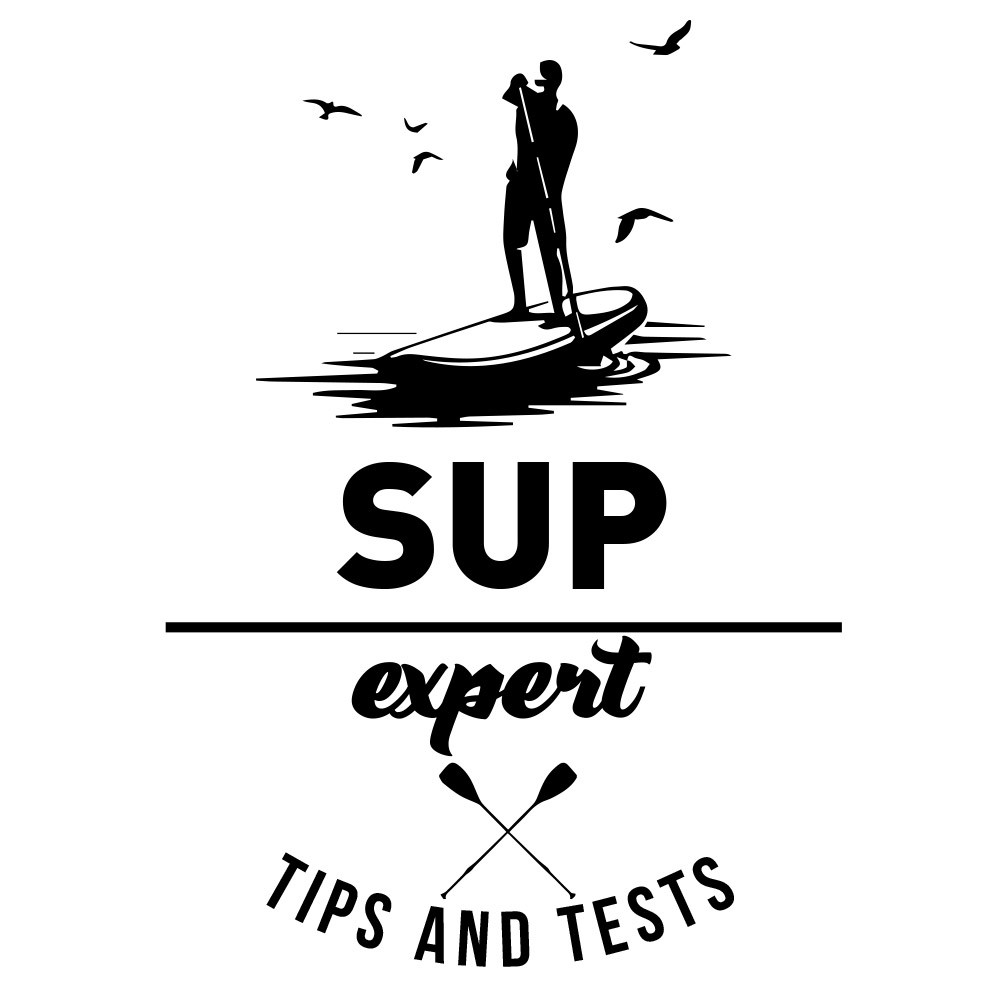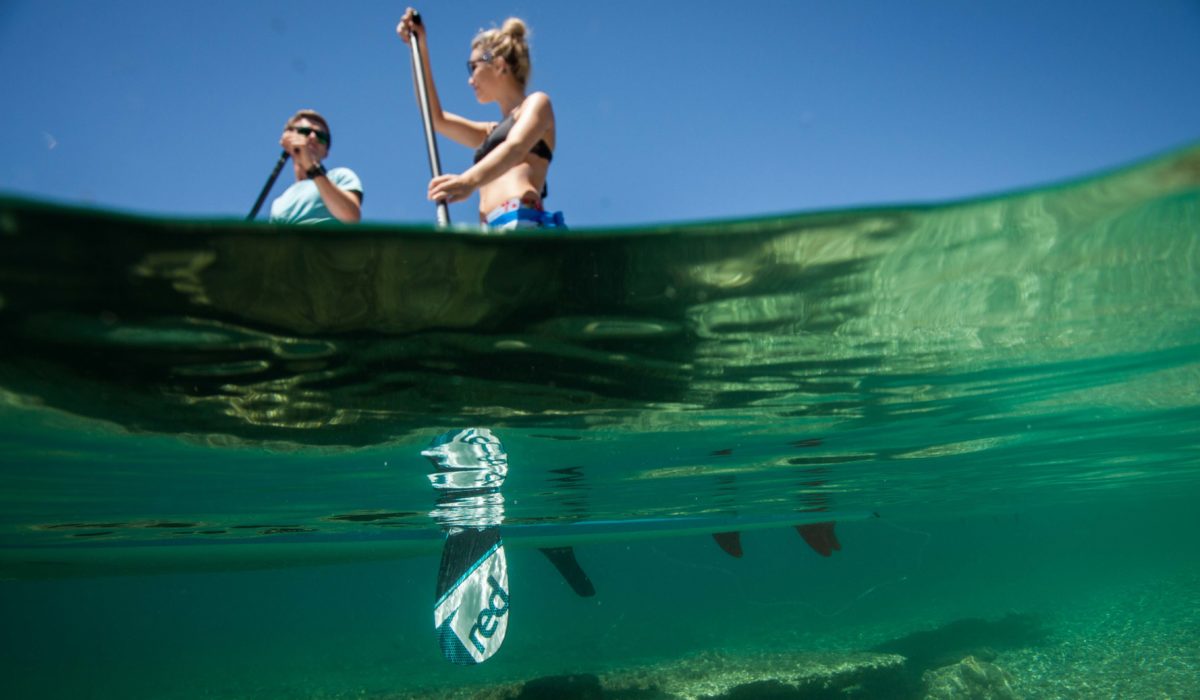Knowing how to paddle effectively depends on three factors: the position of the paddler on the board, the paddling technique and a paddling frequency adapted to the activity.
Feet well centred, parallel to the longitudinal axis of the board, facing forward and wide enough apart, knees very slightly bent.
One hand should be positioned at the top of the paddle. The other hand is positioned between the top third and half of the handle. For the angle of the blade, it must face forward.
The paddle should enter the water in front of you and exit at your feet. Alternate regularly from side to side. Depending on the distance to be covered, adapt the frequency and power of the paddle.
The right position
When paddling, you have to think about having the right position to paddle effectively. You also need to think about limiting the risk of muscle ache and pains.
First of all, we will stand upright, facing forward (the fins are at the back), with our feet parallel and wide enough to have a good balance. The toes should be approximately equal distance from the nose and tail of the board.
To move forward, we will then lean forward slightly (the more we move forward, the more we can lean forward), our arms almost stretched out in front of us. The idea is to make the body work like a spring. You paddle more with your body than with your arms. In order to prioritize the deep muscles that allow you to develop maximum power, you will keep your back as straight as possible. Your eyes should be looking for the horizon, straight ahead.
The position of the hands on the paddle is often overused. Although it is essential: the right hand grabs the handle of the paddle in pronation (palm down), the left hand grabs the handle between the upper third and the middle of the paddle. The palm of the hand facing towards you. This is to paddle on the left side of the board. Then the position of the hands is reversed by changing sides.
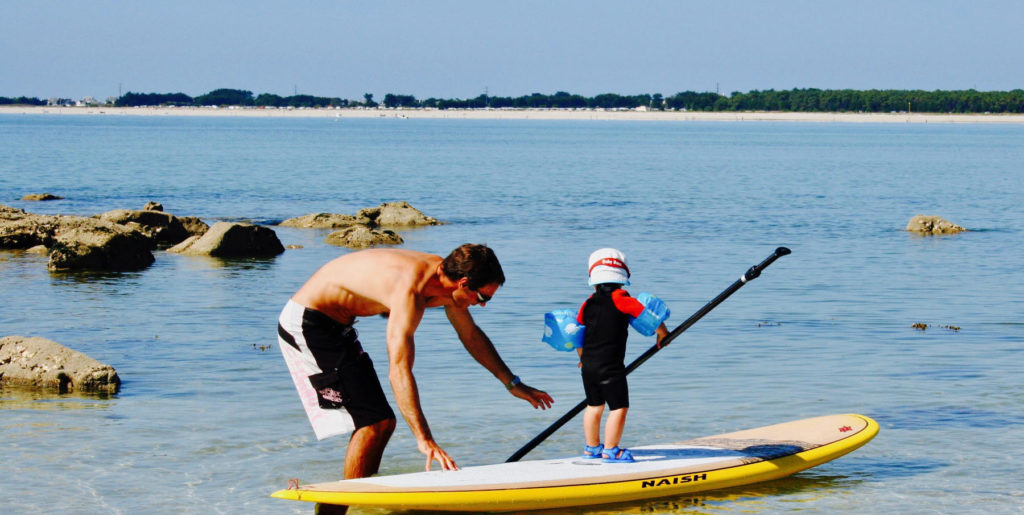
Paddling technique
Position of hands and paddle
Once you have assimilated the correct position of the hands and body, you still don’t know how to paddle effectively. It’s a matter of taking the paddle in the right direction. Indeed, the “curved” part of the paddle is forward and the concave part is turned towards you.
The upper hand is used to push the paddle into the water, then push the handle forward while the lower hand is used as a support point. You can, punctually, pull with the low hand to develop maximum power. But it is not recommended for long tours, as you can quickly have muscles pain.
Paddle movement
The blade of your paddle will look far ahead. It is pushed into the water and pushed with the upper hand while the lower hand pulls slightly (or not at all). The blade then pushes the water backwards. The blade is pulled out when it reaches the level of the feet, otherwise you glide as well.
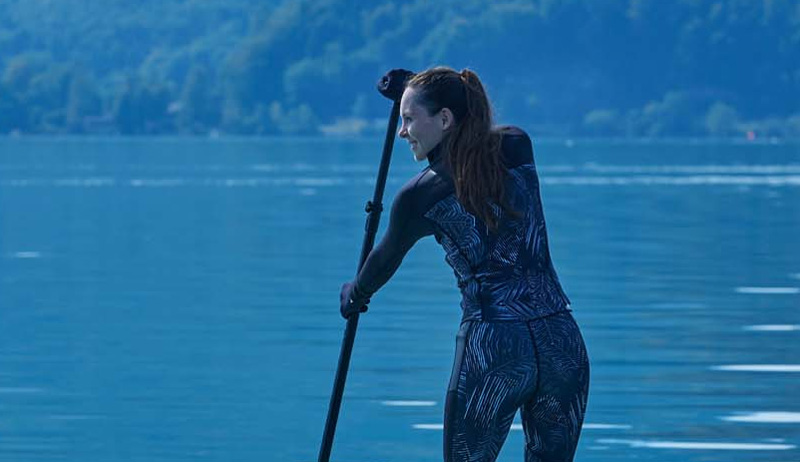
During the first SUP outings, it quickly becomes clear that in order not to go round in circles, it is necessary to frequently alternate the paddle sideways. However, there are techniques to go straight even without changing the paddle sideways.
Mastered by advanced paddlers, the “gooseneck” technique allows you to go straight without having to change sides after a few strokes of the paddle. To do so:
- The high hand will be far to the side, outside the board in order to keep the handle as vertical as possible
- the low hand is tonic, well tightened to control the blade accurately
- at the beginning of the movement, the blade then has an angle slightly turned towards itself. It should be almost parallel to the board
- the movement of the blade makes an arc of a circle to finish parallel to the rail (it is the famous gooseneck).
- For the blade, it goes out of the water at foot level, not beyond
- the movement must be short and tonic to use the body as a spring, rather than forcing on the arms
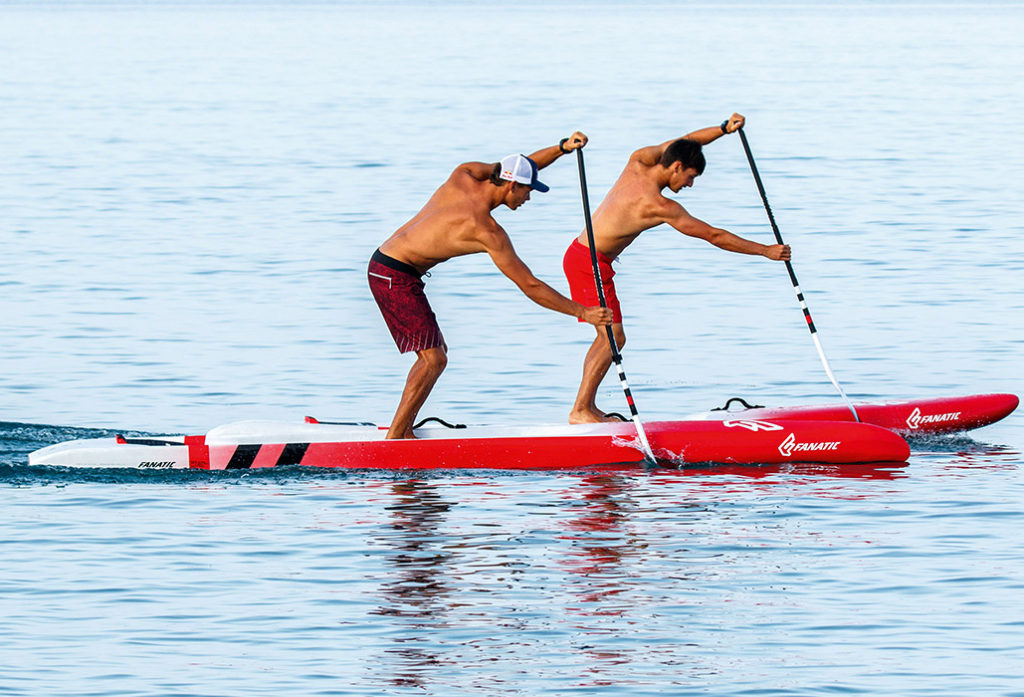
The mastery of this technique allows you to go straight in any situation. It is essential to master this technique in racing or surfing. Above all if you want to place yourself in the best place to catch the waves in the best conditions. And when you go for a tour, what a comfort once you stop zigzagging!
Frequency or power?
To know how to paddle effectively, you have to adapt your riding to the activity you are doing.
Thus, we will look for a high frequency of paddling. But without trying to force on the paddle during long tours or races, while we will look for maximum power in white water or surfing. This provides good support in unstable phases. It also allows the necessary accelerations to cross a difficult area of rapids or to catch a wave.
In the context of a tour, we will favour a medium paddling frequency, while trying never to force on the arms. It’s the best compromise for paddling for a long time without getting too tired. Ideally, the board should be allowed to glide for a few moments on its momentum before starting a new paddling movement.
